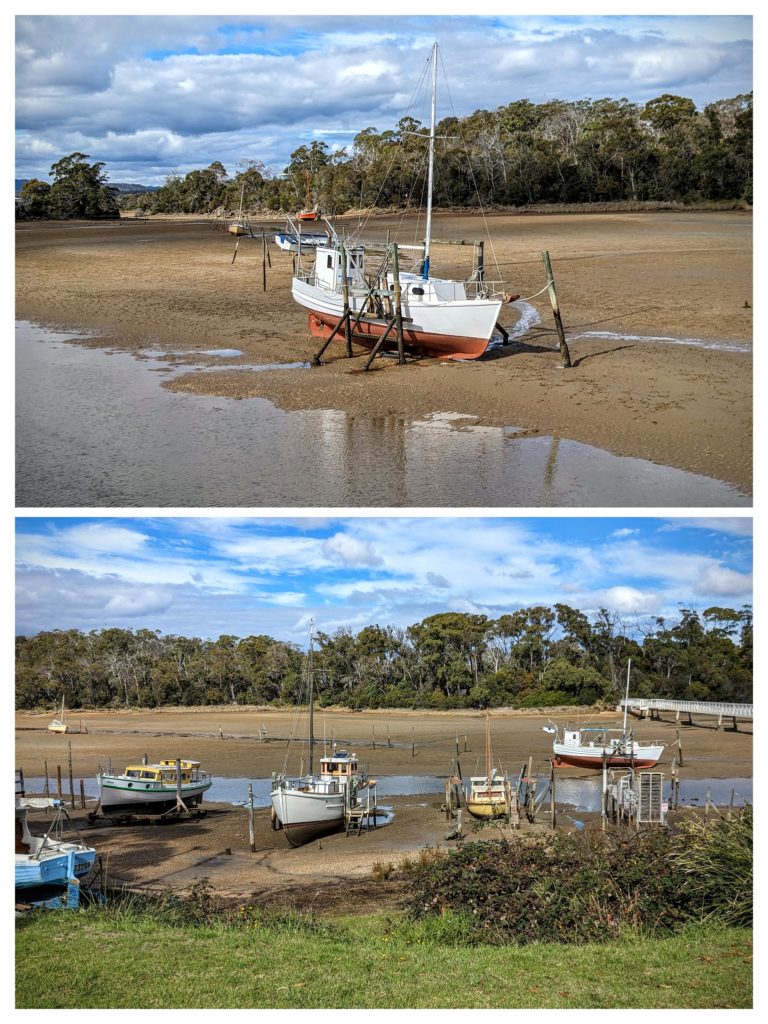April 16 More ‘Roos (Day 202)
Today we went for a drive to the nearby community of Port Sorell, across the Rubicon River Estuary from the park. There are a few walks we wanted to try around the area. We were surprised to learn that this river inlet at Port Sorell has been a boat-building hub since the mid 1800’s!

The tide was out and the boats were beached! Apparently that makes it ideal to work on building boats. We heard power tools being used somewhere down the riverfront as we crossed the footbridge into the conservation area.
The walks were short so we were back at the park in a few hours. I spent some time in the Visitors Center learning about the various animals we have not seen, due mostly to them being nocturnal, and us being asleep then!

The Tasmanian Devil (in the top photo) population in the park has been severely affected by Devil Facial Tumour Disease (DFTD). The Wildlife Service is working with Universities to identify the cause of the disease and formulate a vaccine if possible. The Tiger Quoll (bottom photo) is a new specie to me and has a very interesting natural history!
Another animal we haven’t seen, except as roadkill a few times, is the Wombat. I read about it in the Visitors Center and learned that researchers received an Ig-Nobel Prize for studying how wombats make square poop! As to why they make square poop there are lots of theories! Unfortunately here at the NP the wombat population was decimated by an epidemic of mange that killed most of them, but they are slowly recovering. Walking back to the camper I spotted this beautiful bird feeding on the cones dropped by the she-oak tree across from our site.

The Green Rosella is beautiful and common, although this is the first one I’ve seen! You can see the many cones dropped by the tree that the bird can choose from!
As evening approached we took a short walk to the “Kangaroo Lawns” around the Visitors Center, created by the many marsupials that are found in the area that graze the grassy fields at dawn and dusk.

The forester kangaroos were joined by the smaller wallabies in the glow of the evening light.
The last animal sighting I’d like to share with you is one of which I could never get a good picture of, but we saw many of them around the camper. The Roufous Bellied Pademelon likes to stick to the edges of the bush, it is the smallest (and cutest) of the kangaroo-looking animals, and at first I thought they were young wallabies. We enjoyed our three nights here at Narawntapu NP, it was peaceful and a great chance to see some of the wildlife of Tasmania!
